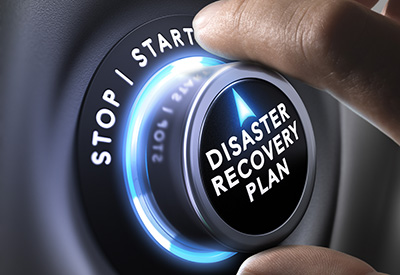- Certified Diversity and Security Cleared Organization | GDPR Compliant
Managing Contingent Workers During a Disaster
Last updated on August 20th, 2018 at 05:35 pm
Whether it’s a hurricane or earthquake, a fire on the factory floor or a labor strike, the list of natural and manmade disasters that businesses are forced to contend with is lengthy. In the first quarter of 2017 alone, the U.S. had 13 catastrophic events according to insurance industry analysts.
Most importantly, staffing clients and their providers need to think about how a disaster would affect their flexible workforce and their ability to provide continuing service and pay their employees.
Would you have enough talent to continue operations? Would your staffing partners be able to reassign their workers to another location or scale quickly to accommodate increased staffing demands? Did you know that 20 percent of companies don’t even ask their key suppliers if they have a business continuity plan in place?
While everyone hopes that they can avert disaster, experts say “that those who have prepared and made continuity plans survive with comparatively minimal loss and/or disruption of productivity.”
Given businesses’ increasing reliance on contingent workers, staffing buyers and their partners need a plan. Here are some factors to consider when devising an effective disaster recovery and continuity strategy.
Effective Communications
Do your staffing partners have a way to get hold of their employees if disaster strikes? Every staffing firm should have a crisis communication plan to ensure that accurate information is received from program managers and provided to staffing employees before, during and after a disruption.
Remember, there may be no Wi-Fi or cellular phone service or electrical power, at least for a while. Text messaging or a text messaging alert system can be useful for communicating with contingent workers when phone service and computers are down. Staffing firms can determine who is available to work and relay reporting instructions or vital information to get valuable workers back on the job. Social media can be used as well to disseminate information and receive feedback via incoming messages and posts.
Of course to maintain communications, employee contact information should be compiled and accessible via the cloud and/or hard copy lists stored in alternate locations. The plan should also include a way to redirect incoming calls to an unaffected location and a set schedule for giving and receiving updates from program managers. Particularly in a post-disaster situation, good communication is the key to a speedy recovery.
Payroll and Benefits Continuity
An important part of business continuity planning involves timekeeping and payroll. To continue operations, staffing firms need to ensure that back-up payroll data is stored at an off-site location or in the cloud.
They also need remote access technology or a way to facilitate the approval of employee time and the uploading of attendance data into the payroll system, especially in cases where contractors and line managers may be redeployed to other locations or allowed to work from home. Even in the wake of a disaster, employees still need to be paid on time.
In addition, benefits continuity is integral to a disaster recovery plan. Planning ahead and providing ongoing benefits to contingent workers can ensure their availability and resilience when they are needed most. For example, having the ability to bring back contractors who are familiar with your technical environment can guarantee that critical systems get back online as quickly as possible.
Employees who are unable to work may be eligible for unemployment and they may need access to medical insurance, sick leave, disability coverage, Family and Medical Leave Act (FMLA) or COBRA. Post-disaster, staffing employers need to be mindful of employees’ need to take legally-protected leave.
Restaffing After the Event
Without the assistance of capable staffing partners, getting restaffed after a disaster can be difficult. Trained workers may be in short supply and businesses often need additional staff with different skillsets to liaise with clients, fulfill orders and recover from a disaster. Did you know that companies that can’t resume operations within 10 days after a disaster’s first impact are unlikely to survive?
Instead of leaving things to chance, staffing firms should anticipate a client’s potential needs and devise a plan that incorporates high-volume staffing strategies and remote or work-from-home policies and capabilities.
For example, staffing firms should have the ability to recruit a specified number of candidates and evaluate them quickly. Then, both parties should consider using a rapid on-boarding process, group training and coaching to quickly transform new contingents into productive contributors.
Finally, mitigating the impact of downtime and business disruption is vital, but at what cost? From a client’s perspective, a supplier’s business continuity plan should include alternate sourcing strategies as well as rate continuity and pricing guarantees.
While we’ve only covered a few very important points in this post, we hope you use them to start a conversation with your staffing partners about disaster recovery and business continuity.


